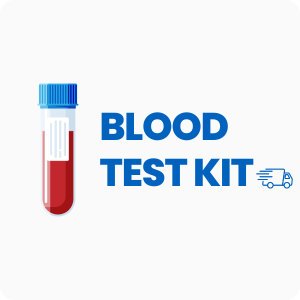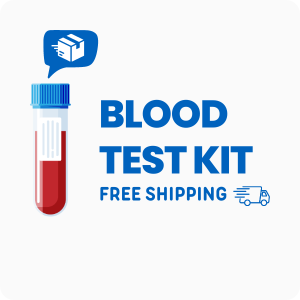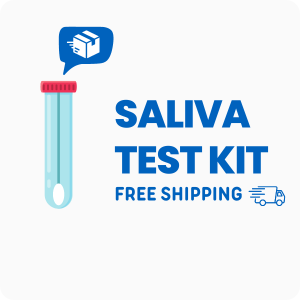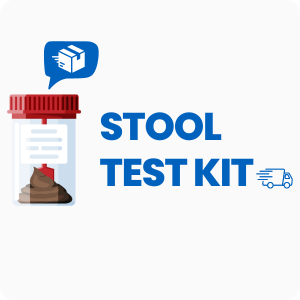Ordering the DetoxiGenomic Profile | Europe
The DetoxiGenomic Profile helps identify how your body processes and removes toxins by analyzing specific genes involved in detoxification. This test can reveal genetic patterns that may affect how you respond to environmental chemicals, medications, and even certain foods. Interestingly, some people may have genetic changes that slow down or speed up detoxification, which can impact how they feel after exposure to everyday substances.
Ordering this test can help you:
- Pinpoint genetic factors that may affect your response to environmental toxins and chemicals
- Identify possible reasons for ongoing fatigue, joint pain, or skin problems linked to detoxification pathways
- Support your doctor in creating a nutrition or supplement plan tailored to your genetic makeup
- Find out if you have a higher risk for oxidative stress, which can affect energy and immune function
- Guide decisions about lifestyle changes to help your body clear toxins more efficiently
Who Should Consider Genetic Detoxification Testing
People who notice they feel tired, have trouble with skin rashes, or react strongly to perfumes or cleaning products may benefit from this test. For example, someone who always feels exhausted after being in a newly painted room or who gets headaches from strong smells could learn if their genes make it harder to clear certain chemicals.
Ordering this test may also be helpful if you:
- Have a family history of chronic fatigue, joint pain, or unexplained digestive issues
- Experience frequent reactions to medications or supplements
- Struggle with ongoing inflammation or allergies that do not improve with standard care
- Notice brain fog or trouble focusing after eating certain foods or being in polluted areas
- Have trouble recovering from anesthesia, which can be linked to how your body processes chemicals
Testing for genetic detoxification patterns can help you and your doctor make targeted changes to your diet, supplements, and environment, which may improve symptoms like fatigue, skin irritation, or trouble with certain foods. Delaying this test could mean missing out on information that may help you avoid triggers or exposures that make symptoms worse.
Preparing for Genetic Detoxification and Metabolism Testing
Fasting is not required for this test, but always check the test kit instructions for any special steps before your blood draw. Make sure to follow any directions your doctor or healthcare provider gives you, as these can help ensure your sample is collected correctly and processed without delays.
Labs Included When Ordering Your DetoxiGenomic Profile
| Test Name | Reference Range | What This Marker Means | Low and High Levels of DetoxiGenomic Profile |
|---|---|---|---|
| Detoxification Phase I: Cytochrome P-450 Enzymes | |||
| CYP1A1 | Wild type, Heterozygous, Homozygous variant | CYP1A1 helps break down toxins from smoke, pollution, and some foods. It also affects how your body handles hormones and certain medications. | High levels mean faster breakdown of toxins, which can sometimes create more reactive byproducts.
Low levels mean slower detoxification, leading to buildup of certain chemicals. |
| CYP1B1 | Wild type, Heterozygous, Homozygous variant | CYP1B1 is involved in processing hormones and environmental toxins, and may influence cancer risk. | High levels mean increased conversion of hormones and toxins, which can raise oxidative stress.
Low levels mean reduced ability to clear certain chemicals and hormones. |
| CYP2A6 | Wild type, Heterozygous, Homozygous variant | CYP2A6 helps break down nicotine and some medications, and is important for clearing certain toxins from the body. | High levels mean faster processing of nicotine and drugs, which may lower their effects.
Low levels mean slower clearance, which can increase side effects or toxicity. |
| CYP2D6 | Wild type, Heterozygous, Homozygous variant | CYP2D6 is key for breaking down many medications and some environmental chemicals. | High levels mean rapid drug metabolism, which can reduce medication effectiveness.
Low levels mean slower breakdown, increasing risk of side effects. |
| CYP2E1 | Wild type, Heterozygous, Homozygous variant | CYP2E1 processes alcohol, solvents, and some drugs, and can produce reactive oxygen species. | High levels mean more rapid toxin breakdown, but higher risk of oxidative stress.
Low levels mean slower clearance of alcohol and chemicals. |
| CYP2C9 | Wild type, Heterozygous, Homozygous variant | CYP2C9 is important for processing certain medications and environmental toxins. | High levels mean faster drug clearance, which may lower drug effectiveness.
Low levels mean slower breakdown, increasing risk of drug buildup. |
| CYP1C19 | Wild type, Heterozygous, Homozygous variant | CYP1C19 helps process certain drugs and toxins, and can affect how you respond to medications. | High levels mean rapid drug metabolism, which can reduce medication effects.
Low levels mean slower clearance, raising risk of side effects. |
| CYP3A4 | Wild type, Heterozygous, Homozygous variant | CYP3A4 is the main enzyme for breaking down many drugs and toxins, and helps protect the body from chemical buildup. | High levels mean faster drug and toxin clearance, which can lower drug levels.
Low levels mean slower breakdown, increasing risk of buildup and side effects. |
| Detoxification Phase II: Conjugation and Elimination | |||
| COMT (Catechol-O-methyltransferase) | Wild type, Heterozygous, Homozygous variant | COMT helps clear stress hormones and some toxins, and is important for mood and mental clarity. | High levels mean faster breakdown of stress hormones, which can affect mood.
Low levels mean slower clearance, which may lead to anxiety or trouble focusing. |
| NAT1 (N-acetyl transferase 1) | Wild type, Heterozygous, Homozygous variant | NAT1 helps process certain drugs and chemicals, and is involved in removing toxins from the body. | High levels mean faster toxin removal, which can lower risk of buildup.
Low levels mean slower clearance, which may increase sensitivity to chemicals. |
| NAT2 (N-acetyl transferase 2) | Wild type, Heterozygous, Homozygous variant | NAT2 is important for breaking down drugs and environmental chemicals, and can affect how you react to certain exposures. | High levels mean rapid toxin processing, which can lower risk of buildup.
Low levels mean slower clearance, which may increase side effects from drugs or chemicals. |
| GSTM1 (Glutathione S-transferase M1) | Present, Null | GSTM1 helps remove toxins and protects against oxidative stress by supporting glutathione activity. | High levels mean strong detox support and better protection from oxidative stress.
Low levels mean reduced ability to clear toxins, which can increase risk of cell damage. |
| GSTP1 (Glutathione S-transferase P1) | Ile/Ile, Ile/Val, Val/Val | GSTP1 helps detoxify chemicals and supports antioxidant defenses, especially in the lungs and brain. | High levels mean better protection from toxins and oxidative stress.
Low levels mean weaker detox support, which can increase risk of inflammation. |
| GSTT1 (Glutathione S-transferase T1) | Present, Null | GSTT1 helps remove toxins and supports the body’s antioxidant system, especially in the liver and kidneys. | High levels mean strong detoxification and antioxidant support.
Low levels mean reduced ability to clear toxins, which can increase risk of chemical buildup. |
| Oxidative Protection | |||
| SOD1 (Superoxide dismutase 1) | Wild type, Heterozygous, Homozygous variant | SOD1 helps protect cells from damage by breaking down harmful oxygen molecules, supporting energy and immune function. | High levels mean strong antioxidant protection, which can lower risk of cell damage.
Low levels mean weaker defense against oxidative stress, which can increase risk of fatigue and inflammation. |
| SOD2 (Superoxide dismutase 2) | Wild type, Heterozygous, Homozygous variant | SOD2 is important for protecting the mitochondria, the energy centers of cells, from oxidative damage. | High levels mean strong mitochondrial protection and better energy support.
Low levels mean increased risk of cell damage and lower energy production. |
Reference ranges may change slightly as labs update their methods and scientific guidelines.
DetoxiGenomic Profile FAQ
Is there DetoxiGenomic Profile testing near me?
This is a test kit that you can use for a local blood draw—check the draw location link at the top of the page. If you have ongoing fatigue or chemical sensitivity, being able to collect your sample nearby makes it easier to get tested without extra travel or delays.
How do I interpret the test results?
While your treating physician should review your results, we also offer a one-on-one test results review with our clinical team to help you understand your genetic detoxification patterns and what they may mean for your symptoms.
What is the cost of the test?
The price listed for this test includes standard shipping to you and return shipping to the lab, but local draw fees may apply. Ordering this test can help you find out if your symptoms are linked to how your body clears toxins, which may help you feel better sooner.
How often should I retest?
Retesting is usually recommended every 3-5 years, or if you experience new or worsening symptoms that may be related to toxin exposure or changes in your environment. Repeating the test can help track changes and guide updates to your nutrition or supplement plan.
How accurate is the test?
This test uses PCR-based DNA analysis to detect genetic variants in detoxification and antioxidant genes, with a specificity of 99.9% and sensitivity of 99.8%. TrueHealthLabs.com partners with CLIA-certified and CAP-certified laboratories to uphold rigorous testing standards for dependable results.
Important Notes
READ: These tests are available for European countries only.
Medical Review Board
Reviewed by Jeff Donohue M.D. from Body Logic and Brady Hurst DC, CCCN. Written by True Health Lab’s team of editorial health contributors.
Disclaimer: This information is for educational purposes only and not intended as medical advice. Consult your healthcare provider for personalized guidance.
Why Customers Trust True Health Labs - What People are saying
Also rated 4.6 out of 5 based on 3452 ShopperApproved reviews- See all TrueHealthLabs.com reviews.










